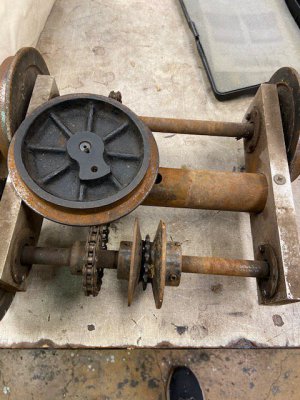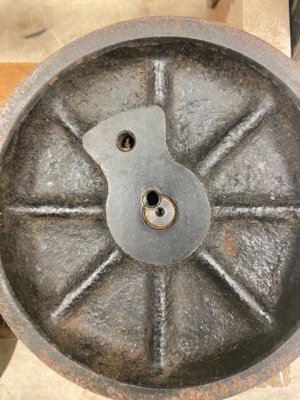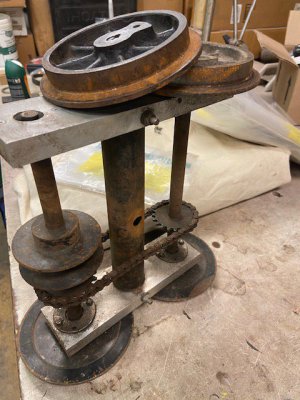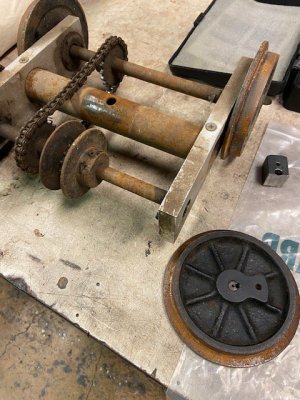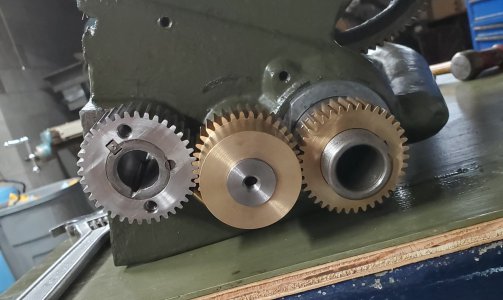I need to build a replacement axle for this amusement park train ride, and it’s pretty straightforward, except for the method which was used to key the wheel to the axle.
I have a couple of ideas on how to pull this off, but wondering if anyone here has done this before ? or has similar experience and thoughts on how to achieve this.
The issue lies in, utilizing the existing tapped hole, or more specifically (half of a tapped hole), in the existing train wheel. I need to construct a new axle so that the end of the shaft has half of a tapped hole to line up with the other (existing) half in the wheel and be able to insert a 6 mm set screw to lock it in place.
I have a couple of ideas on how to pull this off, but wondering if anyone here has done this before ? or has similar experience and thoughts on how to achieve this.
The issue lies in, utilizing the existing tapped hole, or more specifically (half of a tapped hole), in the existing train wheel. I need to construct a new axle so that the end of the shaft has half of a tapped hole to line up with the other (existing) half in the wheel and be able to insert a 6 mm set screw to lock it in place.


